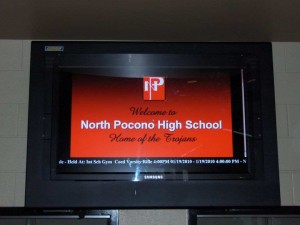In such a fast-paced world, people want to be kept informed. In the service industry, when people are forced to wait it leads to complaints and disgruntled customers. Transport companies have long known this and have always tried to keep customers up-to-date of the latest developments. Knowing about train delays, timetable changes and cancellations is important to customers, as it can affect their working day by making them late, and knowledge helps them make alternative arrangements.
Information screens provide an ideal platform for keeping customers informed. With a networked system, operators can relay information to the customer as and when it comes in. Information screens are now a common sight on station platforms and bus depots.
These screens are normally just the standard LCD TV systems we all use at home, but because of the types of location the screens have to function, they need protection from the elements.
Protection for information screens is not just about keeping them dry and out of the weather, although, obviously, this is important for any screen functioning outdoors. However, other elements and problems need defending from in outdoor environments too.

Readability is essential for information screens and several factors can cause problems with the clarity of a screen. Sunlight is one issue that needs addressing when using any type of screen outdoors. The reflection and brightness of the sun can lead to glare and viewing problems. Sometimes this can be corrected by changing the position of the screen, hanging it under an awning or shelter. On other occasions, however, anti-reflective glass and high brightness screens are necessary to ensure complete readability.
Because of the amount of static content on an information screen, plasmas are not ideal as they can suffer from screen burn, where permanent marks form on the screen due to the screen face getting hot. LCDs are far better equipped to deal with static content.
Keeping the LCD at the correct operating temperature is also essential, especially in areas where excessive heat and cold occur during seasonal changes. When installing information screens, making sure the temperature parameters are within those of the possible ambient extremes is essential.
Comments are closed.